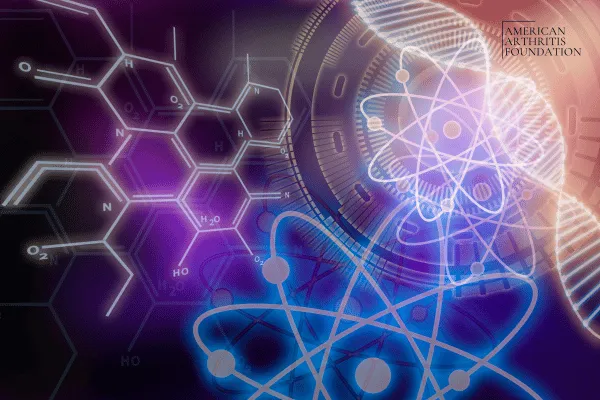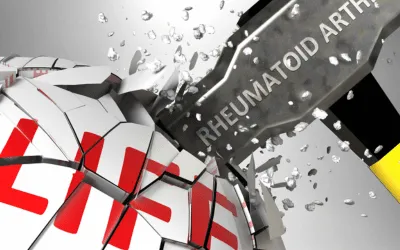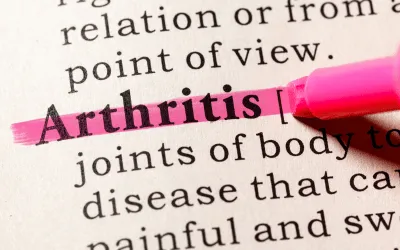About Arthritis
As the nation’s #1 cause of disability, arthritis affects nearly 60 million adults and 300,000 children. Over 100 types of arthritis and related conditions damage the joints and often other organs.
How can we assist you?
Helpful Tools for You

The Future of Cellular Communication: How Placenta Derived Protein Array (PDPA) is Revolutionizing Regenerative Medicine
Despite significant advancements, regenerative medicine continues to face critical limitations. Traditional methods often struggle with inefficiencies in cellular communication and the inability to fully replicate the body's natural healing processes. Patients with chronic injuries or degenerative diseases are left with limited options, and the promise of true regeneration remains unfulfilled.
Enter Placenta Derived Protein Array (PDPA) technology – a groundbreaking innovation poised to revolutionize the field. By harnessing the unique regenerative properties of proteins derived from the placenta, PDPA offers unprecedented potential to enhance cellular communication and accelerate tissue repair. This transformative technology not only bridges the gaps left by conventional treatments but also paves the way for a new era in regenerative medicine, where the body's innate healing capabilities can be fully realized.
Placenta Derived Protein Array (PDPA) is a collection of proteins extracted from the human placenta, known for their regenerative properties. These proteins are organized into an array for therapeutic use, particularly in regenerative medicine.
Brief History and Development of PDPA Technology
Early Research: In the early 2000s, researchers discovered the regenerative potential of placental proteins, recognizing their ability to stimulate cell growth and differentiation.
Advancements: By the 2010s, improved extraction and purification techniques allowed for precise isolation of these proteins, preserving their bioactivity.
Formation of the Array: In the late 2010s, scientists developed the array format to enhance the synergistic effects of the proteins, allowing for targeted therapeutic applications.
Clinical Trials: Early 2020s clinical trials showed promising results in treating chronic wounds, orthopedic injuries, and degenerative diseases, demonstrating significant improvements over traditional treatments.
Current and Future Directions: PDPA technology is now at the forefront of regenerative medicine, with ongoing research exploring its potential in neurology, cardiology, and oncology, promising new hope for patients with previously untreatable conditions.
Process of Extracting Proteins from the Placenta
1. Collection:
The process begins with the collection of placental tissue, typically following childbirth, from donors who have given informed consent.
2. Preparation:
The collected placental tissue is thoroughly cleaned and processed under sterile conditions to remove any contaminants and non-essential components.
3. Extraction:
The cleaned tissue is subjected to a series of biochemical processes to break down the cellular structure and release the proteins. Common methods include enzymatic digestion and centrifugation.
4. Purification:
The extracted proteins are then purified to remove any residual cellular debris and other impurities. Techniques such as filtration, chromatography, and electrophoresis are commonly used to achieve high purity levels.
5. Isolation:
Specific proteins are isolated based on their unique properties, such as molecular weight and charge. This step ensures that the most effective proteins for regenerative purposes are selected.
6. Array Formation:
The isolated proteins are then organized into an array format. This structured arrangement enhances their synergistic effects and allows for precise application in therapeutic treatments.
Role of These Proteins in Cellular Communication and Tissue Regeneration
1. Cellular Communication:
Signal Transduction: The proteins derived from the placenta play a critical role in signal transduction, which is the process by which cells respond to external signals. They bind to receptors on the surface of cells, initiating a cascade of intracellular events that alter cell behavior.
Growth Factors: Many of these proteins act as growth factors, signaling cells to proliferate, differentiate, or migrate to areas where tissue repair is needed.
Cytokines: Placental proteins also include cytokines, which modulate the immune response and facilitate communication between cells to coordinate the healing process.
2. Tissue Regeneration:
Cell Proliferation: The proteins stimulate cell division, increasing the number of cells available for tissue repair and regeneration.
Angiogenesis: Some proteins promote the formation of new blood vessels, a process known as angiogenesis, which is crucial for supplying nutrients and oxygen to healing tissues.
Extracellular Matrix Formation: They aid in the synthesis and remodeling of the extracellular matrix, providing structural support for new tissue growth.
Stem Cell Activation: Certain placental proteins can activate resident stem cells, encouraging them to differentiate into the specific cell types needed for tissue repair.
By leveraging these proteins' natural roles in cellular communication and tissue regeneration, PDPA technology enhances the body's ability to heal itself, making it a powerful tool in regenerative medicine.
How Cells Communicate:
Cells communicate with each other through a process known as cellular signaling. This intricate system allows cells to convey information, coordinate activities, and maintain homeostasis within an organism. The primary modes of cellular communication include:
Direct Contact:
Cells can directly interact through cell junctions or cell-to-cell contacts, where molecules on the surface of one cell bind to receptors on the surface of another.
Paracrine Signaling:
Cells release signaling molecules into the extracellular space, affecting nearby target cells. This localized communication is essential for processes like immune responses and tissue repair.
Autocrine Signaling:
Cells produce signaling molecules that bind to receptors on their own surface, providing feedback and self-regulation.
Endocrine Signaling:
Hormones are released into the bloodstream and travel long distances to reach target cells throughout the body. This type of signaling is crucial for maintaining physiological balance and coordinating complex bodily functions.
Synaptic Signaling:
Neurons communicate with each other and with other cell types through synapses. Neurotransmitters are released into the synaptic cleft and bind to receptors on the adjacent cell, enabling rapid and specific communication.
Importance of Signaling Molecules and Receptors
Signaling Molecules:
Types of Signaling Molecules:
Hormones: Chemical messengers released by endocrine glands to regulate various physiological processes.
Growth Factors: Proteins that stimulate cell proliferation and differentiation, essential for development and tissue repair.
Cytokines: Small proteins that modulate immune responses and mediate communication between immune cells.
Neurotransmitters: Chemicals released by neurons to transmit signals across synapses.
Extracellular Matrix Proteins: Molecules that provide structural support and influence cell behavior.
Role of Signaling Molecules:
Initiate Responses: Signaling molecules bind to specific receptors on target cells, triggering a series of intracellular events that lead to a physiological response.
Regulate Functions: They regulate a wide range of cellular functions, including metabolism, growth, immune responses, and apoptosis (programmed cell death).
Coordinate Activities: By transmitting information between cells, signaling molecules ensure that cellular activities are coordinated and adapt to changes in the internal and external environment.
Receptors:
Types of Receptors:
Cell Surface Receptors: Located on the cell membrane, these receptors bind to signaling molecules that cannot cross the cell membrane. Examples include G-protein-coupled receptors, ion channel receptors, and enzyme-linked receptors.
Intracellular Receptors: Found inside the cell, typically in the cytoplasm or nucleus, these receptors bind to signaling molecules that can cross the cell membrane, such as steroid hormones.
Role of Receptors:
Specificity: Receptors provide specificity to cellular communication, ensuring that only target cells with the appropriate receptors respond to a particular signaling molecule.
Signal Transduction: Upon binding to a signaling molecule, receptors undergo conformational changes that initiate a signal transduction pathway, leading to the desired cellular response.
Regulation: Receptors can be regulated by mechanisms such as receptor desensitization, downregulation, or upregulation, allowing cells to fine-tune their sensitivity to signaling molecules.
Cellular communication is fundamental to the functioning of multicellular organisms, enabling cells to coordinate activities, respond to environmental changes, and maintain homeostasis. Signaling molecules and receptors play a crucial role in this process, with signaling molecules acting as messengers and receptors serving as gatekeepers that initiate and regulate cellular responses. Understanding these mechanisms is essential for advancing fields like regenerative medicine, where manipulating cellular communication can lead to innovative treatments and therapies.
Applications of PDPA in Various Fields of Regenerative Medicine
1. Wound Healing:
Chronic Wounds:
PDPA technology has shown significant promise in the treatment of chronic wounds, such as diabetic ulcers and pressure sores. The proteins in PDPA enhance cellular communication and stimulate the growth of new tissue, leading to faster and more effective healing.
Surgical Wounds:
In surgical settings, PDPA can be applied to reduce recovery times and improve the quality of wound healing. The proteins help in minimizing scarring and promoting the regeneration of healthy tissue.
2. Orthopedic Injuries:
Bone Regeneration:
PDPA proteins have been used to stimulate bone growth and repair in cases of fractures and other bone injuries. They promote the proliferation and differentiation of osteoblasts, the cells responsible for bone formation.
Cartilage Repair:
For conditions such as osteoarthritis, PDPA can aid in the regeneration of cartilage. The proteins support the growth of chondrocytes, which are essential for maintaining healthy cartilage tissue.
3. Cardiovascular Repair:
Heart Tissue Regeneration:
After a heart attack, the damaged cardiac tissue has limited ability to regenerate. PDPA technology can enhance the repair of heart tissue by promoting the growth of new cardiac cells and improving the function of existing ones.
Vascular Health:
PDPA proteins can also contribute to the formation of new blood vessels, known as angiogenesis, which is crucial for restoring blood supply to damaged tissues.
4. Neurological Applications:
Nerve Regeneration:
In cases of nerve damage due to injury or disease, PDPA can facilitate the regeneration of nerve cells. The proteins promote the growth and differentiation of neurons and support the repair of neural pathways.
Neurodegenerative Diseases:
Research is ongoing to explore the potential of PDPA in treating neurodegenerative diseases such as Parkinson’s and Alzheimer’s. The regenerative properties of the proteins could help in slowing down disease progression and improving neuronal function.
5. Skin Regeneration:
Burn Treatment:
PDPA technology has been applied in the treatment of severe burns. The proteins help in the rapid regeneration of skin cells, reducing recovery time and improving the quality of new skin formation.
Cosmetic Applications:
Beyond therapeutic uses, PDPA is also being explored in cosmetic treatments to enhance skin rejuvenation and reduce the signs of aging by promoting collagen production and skin cell turnover.
6. Organ Regeneration:
Liver Regeneration:
For patients with liver damage or diseases such as cirrhosis, PDPA can support the regeneration of liver tissue. The proteins aid in the proliferation of hepatocytes, the primary liver cells, improving liver function.
Kidney Repair:
PDPA is being studied for its potential to repair damaged kidney tissue and enhance the regeneration of nephrons, the functional units of the kidney.
7. Stem Cell Therapy:
Enhancing Stem Cell Function:
PDPA proteins can improve the efficacy of stem cell therapies by enhancing the differentiation and proliferation of stem cells. This is particularly useful in treatments aimed at regenerating various tissues and organs.
Tissue Engineering:
In tissue engineering, PDPA can be used to create scaffolds that support the growth of new tissues. The proteins provide the necessary signals for cells to proliferate and organize into functional tissue structures.
PDPA technology is revolutionizing regenerative medicine by providing powerful tools to enhance tissue repair and regeneration across various medical fields. Its applications range from wound healing and orthopedic repairs to cardiovascular and neurological treatments. As research continues, the potential of PDPA to transform regenerative medicine and improve patient outcomes grows, offering new hope for conditions previously considered untreatable.
Effects of Arthritis

Cause of Disability
In the United States, 23% of all adults, or more than 54 million people, have arthritis. It is a leading cause of work disability, with annual costs for medical care and lost earnings of $303.5 billion.

Workforce Effects
Sixty percent of US adults with arthritis are of working age (18 to 64 years). Arthritis can limit the type of work they are able to do or keep them from working at all.

Global Impact
In fact, 8 million working-age adults report that their ability to work is limited because of their arthritis. For example, they may have a hard time climbing stairs or walking from a parking deck to their workplace.
Promoting Interventions That Reduce Arthritis Pain
American Arthritis Foundation recognizes several proven approaches to reduce arthritis symptoms:
Be active. Physical activity—such as walking, bicycling, and swimming—decreases arthritis pain and improves function, mood, and quality of life. Adults with arthritis should move more and sit less throughout the day. Getting at least 150 minutes of moderate-intensity physical activity each week is recommended.
Protect your joints. People can help prevent osteoarthritis by avoiding activities that are more likely to cause joint injuries.
Talk with a doctor. Recommendations from health care providers can motivate people to be physically active and join a self-management education program. Should your arthritis be interfering with your activities of daily living you may be a candidate to receive many new treatments, and learn how to reverse the arthritis condition.


